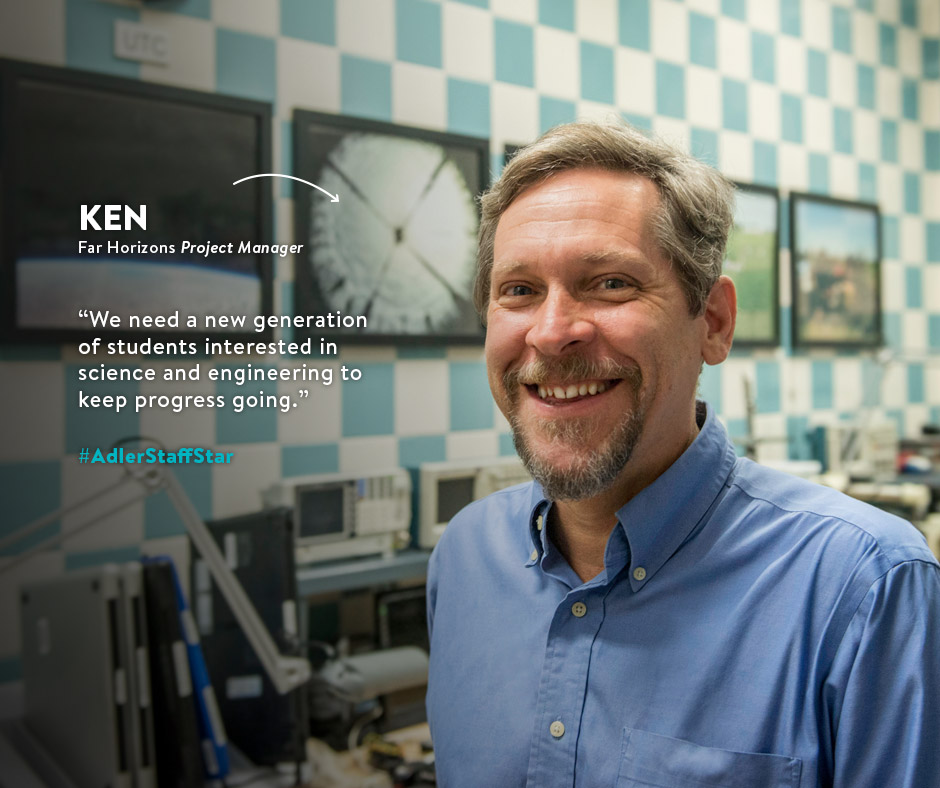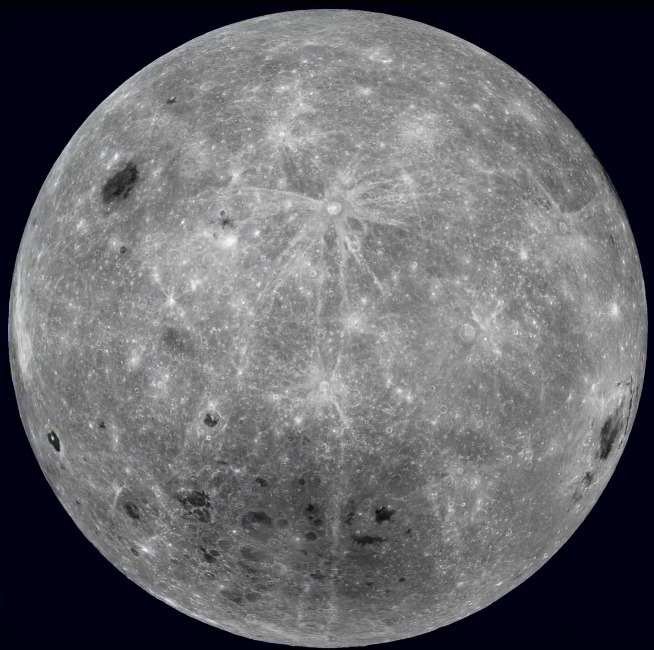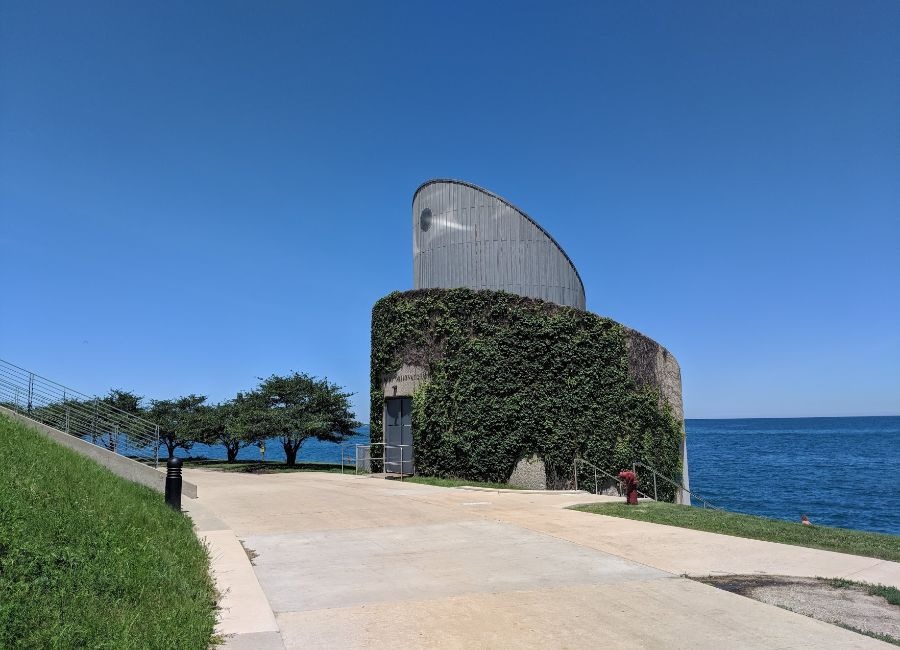An Introduction to our Monthly Series “AstroFan” and Binary Neutron Stars
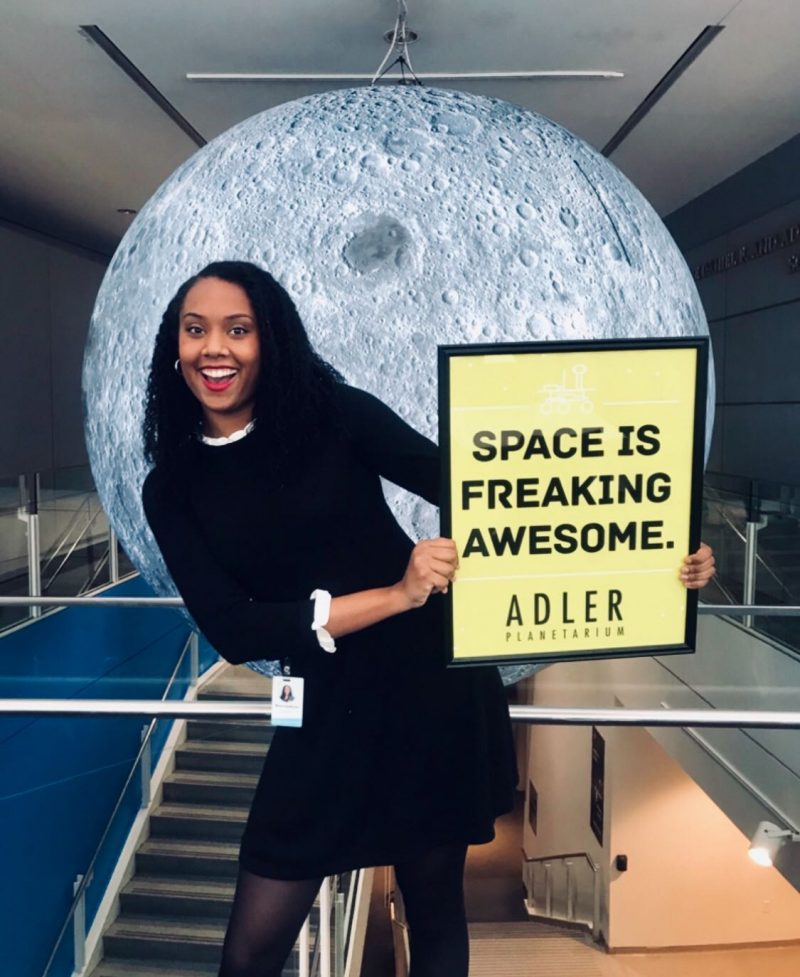
Greetings! My name is Bianca and I work in marketing at the Adler Planetarium. I started here about three months ago in November 2018. Things you need to know about me:
1. I’m a Sci-Fi nerd
2. And I think space is FREAKING awesome
With that, I present to you my new monthly blog series “AstroFan”—I mean, how could I work in a SPACE MUSEUM and not take advantage of it?! In this series, I’ll be talking with Adler astronomers and staff about some of the coolest aspects of the Cosmos.
“I think nature’s imagination is so much greater than man’s. She’s never going to let us relax.”
American Physicist, Richard Feynman
The above quote is one of my favorites and completely encapsulates what has driven my love of astronomy for the past 15 years. At an early age, I discovered that the mysteries of the Universe rivaled even the strangest of science fiction. When I was 10, my interest in astronomy was first sparked after a week spent binge-watching classic sci-fi films with my dad: Planet of the Apes, Star Wars, Omega Man, Forbidden Planet, and The War of the Worlds—to name a few.
Of all the films, the one that struck me the most was a film starring Bruce Dern titled Silent Running. (I highly recommend checking out this film if you haven’t seen it.) If I had to summarize the film with a single tagline, it would be: “Astro-Hippie Goes Rogue in Intergalactic Greenhouse.”
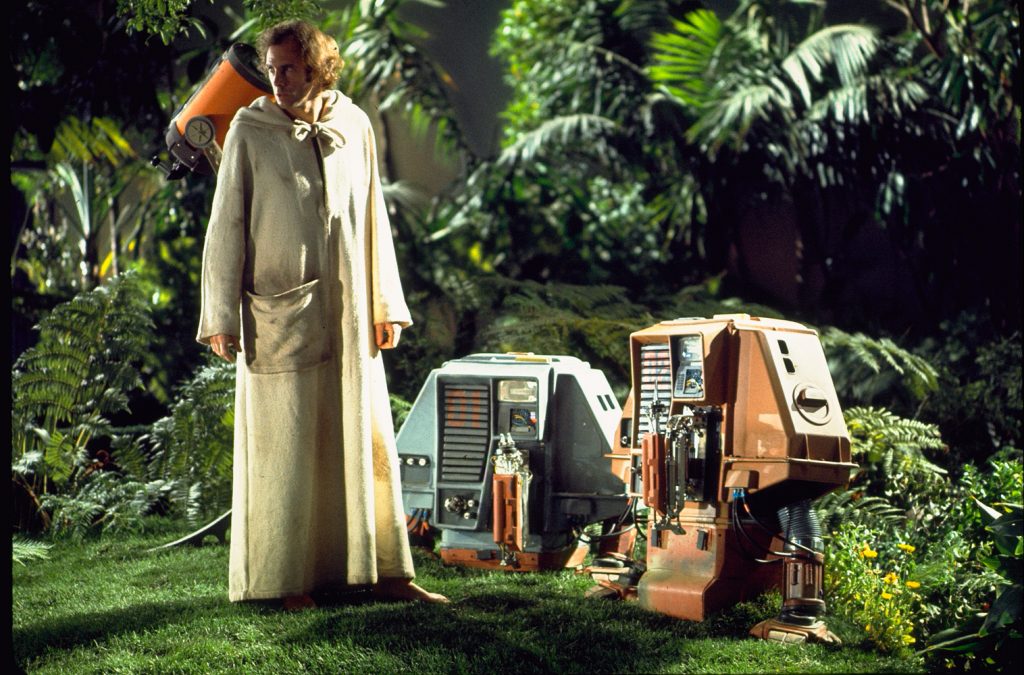
To this day, I’m not quite sure why my younger self had such a visceral reaction to the space melodrama. Perhaps it was the lovely soundtrack, sung by folk legend Joan Baez. Or maybe it was because the film’s plot focused heavily on the possibility of humans seeking refuge in the stars one day. Whatever it was, the film jolted my curiosity about how the real world compared to these fantastical sci-fi stories. Soon, my adolescent book collection experienced a dramatic transformation. The content of my reading shifted from monsters, mermaids, and princesses to gas giants, nebulae, and black holes. My trips to the library turned into concentrated efforts in expanding my knowledge on all things related to astronomy. From these excursions, I soon learned that Richard Feynman’s observation was indeed correct, nature’s imagination is far greater than man’s.
Which brings us to today, where, as you know, I work at the Adler Planetarium. A gold mine for my inner science geek and a constant curiosity stimulator.
Cue Adler astronomer Dr. Mark SubbaRao. I tracked him down in his office one afternoon because I desperately wanted to learn about neutron stars, one of the Universe’s most mind-boggling objects.
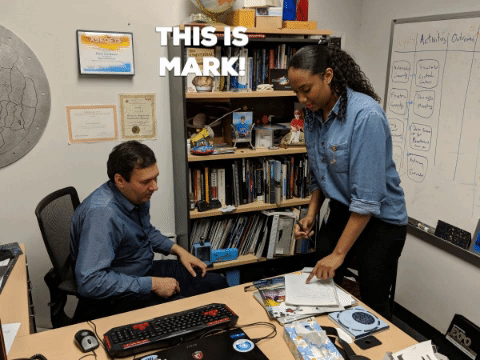
Here’s the gist of what I gathered from our conversation:
When a star bigger than the Sun runs out of fuel, its core collapses and outer layers are torn off in a supernova explosion. Depending on the original size of the star, you’ll get one of two things; either a neutron star (from a star about 8-20x the size of our Sun) or a back hole (from an even bigger star).
Unlike black holes, neutron stars are observable. In fact, they are the densest observable objects in the Universe. (And they were only discovered around 50 years ago!)
Speaking of density, the matter of neutron stars is SO PACKED that if you were to take a teaspoon of neutronium (hypothetical neutron star material) it would contain as much mass as all of the buildings in Chicago COMBINED. That’s more than 5 billion tons!
According to Dr. Mark, things get even weirder when two neutron stars end up orbiting each other and become binary neutron stars. Binary neutron stars can spend billions of years in orbit! Prior to their inevitable collision, binary neutron stars reach orbital speeds that are a SIGNIFICANT fraction of the speed of light (that’s really, really fast). The energy that gets emitted from the collision can be as massive as 200 million suns worth of energy!
In 2017, LIGO (the world’s largest gravitational wave observatory) recorded the first ever binary neutron star collision. It marked the first time that astronomers were able to study gravitational waves and light waves from the same incident. The astronomical event has since become the most studied neutron star collision and has completely reshaped astronomy.
Prior to the 2017 event, scientists thought the majority of heavier elements found on Earth were created from supernovae. It is now understood that most of the heavier elements on earth (i.e. iodine and molybdenum) are actually the result of neutron star collisions.
Imagine that! The elements that help make up you and I, arising from such strange origins.
It calls to mind the iconic final scene from Planet of The Apes (1969) when stranded astronaut George Taylor realizes that the alien planet that he’d been trying to escape was indeed (future) Earth all along. Today, we realized that everyday heavier elements come from the guts of neutron stars. Thankfully, unlike George Taylor, our realization is that of wonder and awe, not shock and terror.

And thus is the beauty of astronomy—no matter how bizarre, a common thread can always be found. Think of that the next time you catch yourself looking up at the night sky! It never hurts to wonder what other quirky celestial objects are lurking in the darkness of space!
Stay tuned for more awesome space facts on the next “AstroFan”.
Thank you for reading!
—Bianca, a.k.a. AstroFan




